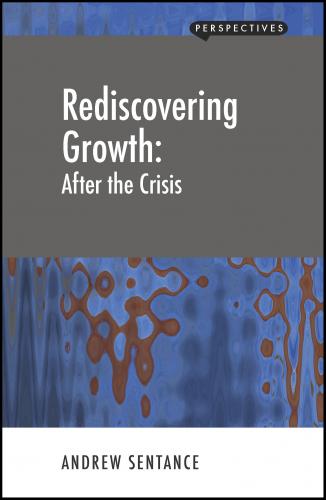Copyright © 2013 Andrew Sentance
Published by London Publishing Partnership www.londonpublishingpartnership.co.uk
Published in association with Enlightenment Economics www.enlightenmenteconomics.com
All Rights Reserved
ISBN: 978-1-907994-27-2 (ebook)
A catalogue record for this book is available from the British Library
This book has been composed in Candara
Copy-edited and typeset by T&T Productions Ltd, London
Cover design: Kate Prentice
Contents
The end of the Great Stability
Winners and losers in the New Normal economy
Recovering control: how should policymakers respond?
Business success in the New Normal
Adapting to survive and thrive
Preface
What has happened to economic growth? Where has it gone? Why are we not returning to previous growth trends which seemed so positive in the 1990s and earlier in the 2000s?
In the aftermath of the financial crisis, these questions are being asked across the Western world by governments, companies and the general public. Many businesses lack confidence about their future prospects in the absence of the drivers of growth which sustained them before the crisis. With sluggish economic and business growth, tax receipts are weak so governments too are struggling to contain public borrowing, reduce their debts and establish a clear direction for economic policy. And when employers and public authorities don’t seem to have a positive view of the economic outlook, it is not surprising that the public also lacks confidence in the future.
The global financial crisis of 2008–9 has been a watershed for economic growth in most Western economies. Though forecasts are becoming more positive about a pick-up in growth in Europe and the United States in 2014, this still does not represent a return to pre-2007 trends. And it follows three years in which growth has been disappointing across the Western world. Indeed, if the OECD’s latest economic forecasts are correct, none of the major G7 economies will grow by over 2% this year (2013).1 Since 1980, the only previous time that happened was in 2008 and 2009 in the midst of the global financial crisis.
This book aims to shed light on the underlying forces shaping this difficult economic situation in the West. Its central thesis is that the major Western economies – in Europe and North America – have entered a New Normal of disappointing economic growth and heightened volatility. And there isn’t a quick and easy escape path from this pattern. But that does not mean we should be pessimistic about the longer-term economic outlook – hence the title: Rediscovering Growth. There is hope of a return to a more stable and sustained world of economic growth if we can learn the right lessons from previous twists and turns in our economic fortunes and adapt them to the circumstances we now face in the early 21st century.
What are those lessons? The first is that well-functioning and flexible economies can and do regenerate themselves. The British economy – which I know best because I have been following its progress since I started studying economics nearly forty years ago – is a very good example. The UK economy expanded at an average rate of over 3% per annum from the late 1940s until the early 1970s and then appeared to hit a brick wall after the mid-1970s recession. UK economic growth between 1973 and 1982 averaged less than 1% per annum. Pessimism was rife in the early 1980s, and there was widespread social unrest. 364 economists wrote to the Times newspaper to protest at the failings of government economic policy. And yet the British economy achieved a remarkable turnaround in the 1980s and set off on another quarter century of 3% plus growth in which the size of our economy doubled. This new ‘golden age’ of economic growth was only brought to an end by the global financial crisis in 2007–8.
The second lesson, however, is more challenging. In order to get on a new growth path painful adjustments in our economies and societies may be necessary. And we cannot guarantee that the necessary changes will take place in countries where there may be strong political resistance to change. Japan provides a very good example of this. Japan has built its economic success on a very productive, efficient and dynamic manufacturing sector. But from the mid 1990s onwards it has been clear to many observers that Japan needed to reform its labour markets and develop a more productive services sector to complement its very successful manufacturing industry. To date this has not happened, and hence Japanese growth remains in the doldrums. For Japan, the inability to undertake these structural changes is a much more important factor holding back growth than the legacy of its financial crisis in the early 1990s.
There are many other examples of economies which have struggled to recover past glories because they could not make the adjustment required. For example, Spain, Italy and Portugal, which flourished in the 1400s and 1500s, were overtaken by the major northern European powers including Britain, and have struggled ever since to re-establish their economic prowess.
The third lesson is that we should not expect the next growth phase to be like the last one. In the 1950s and 1960s, growth in the Western world was boosted by post-war reconstruction, an emerging middle class in Europe and North America, and the new technologies which had emerged in the 1920s, 1930s and during World War II. The development of mass markets for consumer products like motor cars, washing machines and transistor radios were key features of this post-war growth phase. The next growth phase, which started in the 1980s and developed momentum in the 1990s, was supported by a very different set of forces: financial deregulation and liberalization; the opening up of the world economy; and the
